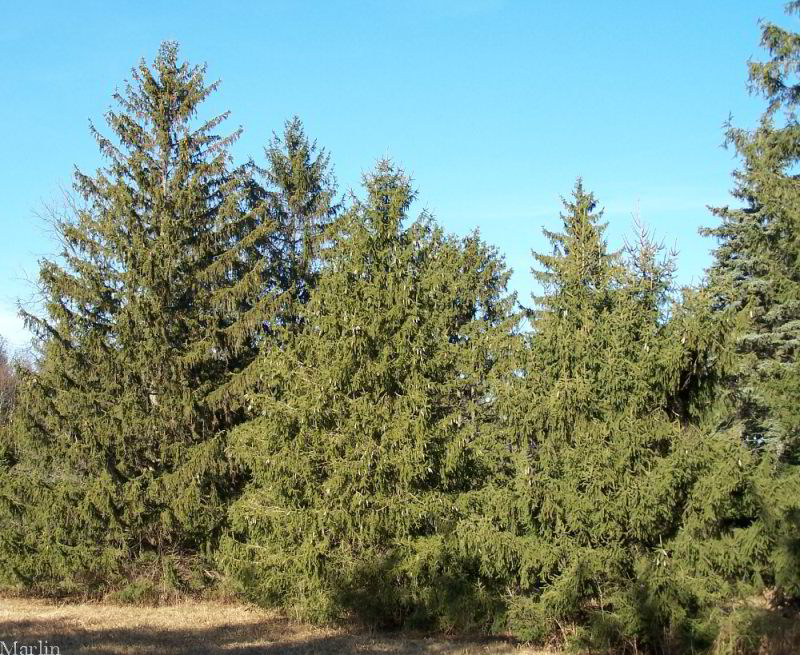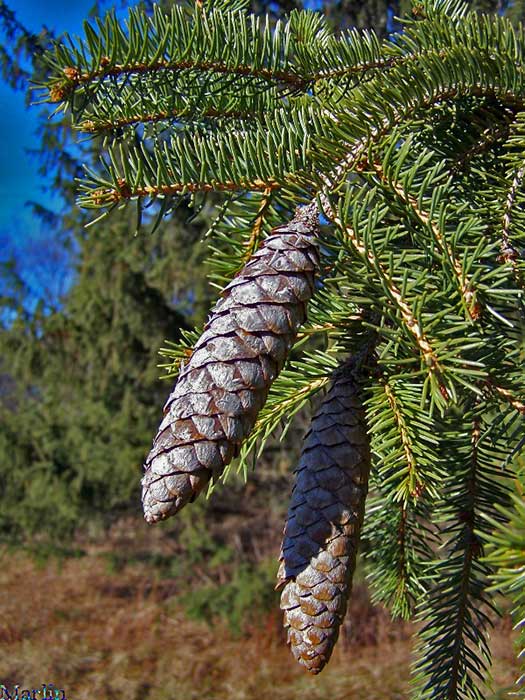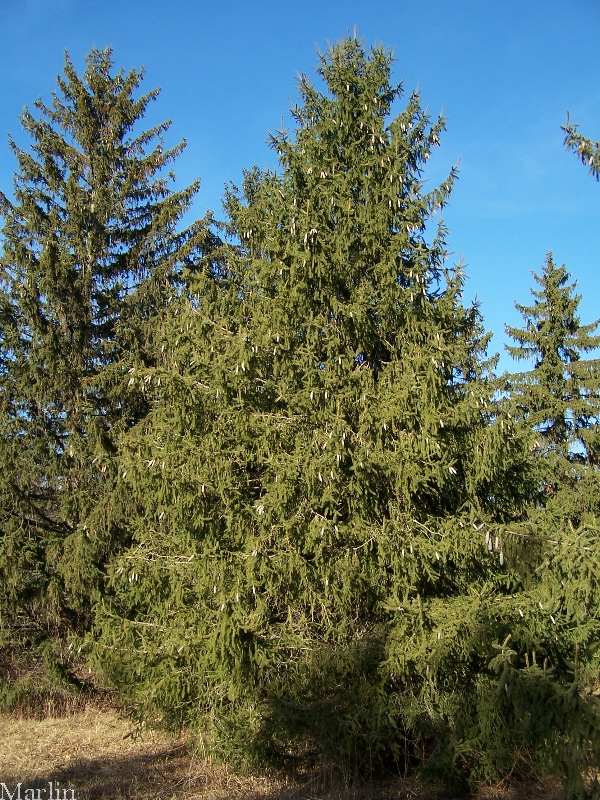Norway Spruce – Picea abies
 A dense stand at the Morton Arboretum, near Hemlock Hill
A dense stand at the Morton Arboretum, near Hemlock Hill
Norway Spruce can grow 80 to 100 feet tall and spread 25 to 40 feet, though some listed cultivars are shrublike. Small-diameter branches sweep horizontally from the straight trunk which can grow to four feet thick. Branchlets droop from the branches toward the ground in a graceful, weeping fashion forming a delicate pyramid. On very old specimens the lower branches increase to 12″ or more in diameter and the top becomes open. Many small-diameter roots originate from the base of the trunk and they are often found fairly close to the surface of the soil. The root system is shallow and often dense, particularly close to the trunk which makes growing grass difficult.

Norway spruce is native to the European Alps, the Balkan mountains, and the Carpathians, its range extending north to Scandinavia and merging with Siberian spruce (Picea obovata) in northern Russia. It was introduced to the British Isles as early as 1500 AD, and is widely planted in North America, particularly in the northeastern United States, southeastern Canada, the Pacific Coast states, and the Rocky Mountain states. Naturalized populations are known from Connecticut to Michigan and probably occur elsewhere.

In its native range, Norway spruce occurs in pure stands, transitional stands mixed with Scotch pine (Pinus sylvestris), or mixed stands with European beech (Fagus sylvatica) and European silver fir (Abies alba). Scattered Norway spruce occurs in seral stands of European aspen (Populus tremula) or hairy birch (Betula pubescens).
Norway spruce wood is strong, soft, straight- and fine-grained, and easily worked. It is not durable in contact with soil. It is widely used for construction, pulp, furniture, and musical instruments. Norway spruce is one of the most common and economically important coniferous species in Europe and Scandinavia. In Maine, thinned and standing dead Norway spruce produced pulp of good strength as reported in a study of the pulp potential [2].
Norway spruce first occurred in Scandinavia approximately 2,500 years ago; its immigration from Europe is attributed to colder Scandinavian winters coupled with increased precipitation and storm events which allowed Norway spruce to colonize areas that were formerly too dry. It survived in Scandinavia in low densities due to frequent disturbances until climatic changes coupled with a decrease in human-caused disturbances (mainly fire) allowed natural succession to proceed, resulting in the current widespread distribution of dense Norway spruce-dominated forests.
References
1. USDA, ARS, National Genetic Resources Program. Germplasm Resources Information Network – (GRIN)
2. Sullivan, Janet. 1994. Picea abies. In: Fire Effects Information System, U.S. Department of Agriculture
Trees Index | Pine Family | Beech, Oak | Nut Trees | Birch Family | Magnolias
Tree Encyclopedia / North American Insects & Spiders is dedicated to providing family-friendly educational
resources for our friends around the world through large images and macro photographs of flora and fauna.

